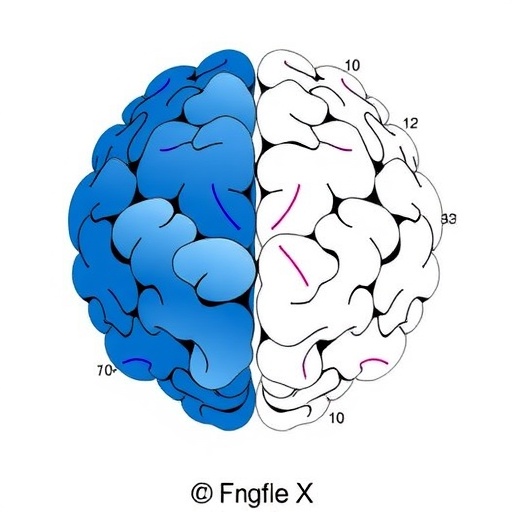In a groundbreaking advancement at the intersection of neonatology and artificial intelligence, researchers have developed a novel AI-based predictive model aimed at identifying pulmonary hemorrhage risk in preterm infants. Pulmonary hemorrhage, a severe and often fatal respiratory complication, presents a significant challenge in neonatal intensive care units due to its unpredictable onset and rapid progression. This latest study, published in the Journal of Perinatology, heralds a transformative leap forward by leveraging complex machine learning algorithms to forecast this devastating condition before it occurs, potentially saving countless vulnerable lives.
Pulmonary hemorrhage in preterm infants represents a critical event characterized by bleeding in the lungs, frequently resulting in acute respiratory failure. The etiology of this condition is multifactorial and involves the delicate interplay of immature lung architecture, fragile vasculature, and systemic inflammation. Despite advances in neonatal care, predicting which infants are at elevated risk remains difficult, with clinicians often reliant on clinical signs that appear after significant deterioration. The integration of artificial intelligence promises to shift this paradigm by offering earlier, data-driven predictive insights.
At the core of this innovation lies an AI algorithm trained on a vast dataset derived from preterm infants’ clinical, laboratory, and imaging data collected across multiple neonatal units. By processing hundreds of variables, including vital signs, blood gas measurements, and ventilatory parameters, the model identifies subtle patterns and risk factors imperceptible to human observers. This multidimensional approach enables early detection of infants at imminent risk for pulmonary hemorrhage, allowing for preemptive interventions with the goal of mitigating or preventing the hemorrhagic event altogether.
.adsslot_X4wpLye1Ys{ width:728px !important; height:90px !important; }
@media (max-width:1199px) { .adsslot_X4wpLye1Ys{ width:468px !important; height:60px !important; } }
@media (max-width:767px) { .adsslot_X4wpLye1Ys{ width:320px !important; height:50px !important; } }
ADVERTISEMENT
The research team employed advanced machine learning techniques encompassing supervised learning frameworks, where the algorithm learns to distinguish cases of pulmonary hemorrhage from control instances by analyzing labeled datasets. The model’s architecture was optimized through iterative training cycles, which fine-tuned its predictive precision and minimized false positives. Notably, the AI system demonstrated superior sensitivity and specificity compared to conventional prediction methods, underscoring the potential of computational intelligence to augment neonatal diagnostics.
Challenges in assembling a reliable dataset were considerable, given the relatively low incidence yet high mortality of pulmonary hemorrhage in preterm infants. To overcome this, the researchers harmonized data from multiple centers, ensuring diversity in patient demographics and clinical practices. Such a multicenter approach enriched the training data, enhancing the model’s generalizability across varied medical settings. This strategic data aggregation is indicative of how collaborative networks can accelerate AI innovation in neonatal medicine.
One of the most compelling aspects of this AI tool is its real-time applicability. Unlike traditional risk scoring systems that require labor-intensive calculations or lab results with significant time lags, the AI model integrates dynamically with electronic health records and bedside monitoring systems. This seamless integration empowers clinicians with immediate risk assessments, facilitating rapid clinical decision-making that could be life-saving in the fragile preterm population.
The biological plausibility of the model’s risk stratification aligns with current understanding of pulmonary hemorrhage pathophysiology. For example, the AI identified variables such as unstable oxygenation indices, fluctuations in blood pressure, and coagulation parameter derangements as key predictors—factors long suspected by neonatologists but now quantifiably validated through AI analytics. This convergence of computational prediction and established physiology bolsters confidence in adopting the tool within clinical workflows.
Beyond risk prediction, the study highlights potential future applications of AI in neonatal medicine. Envisioned expansions include personalized treatment recommendations based on individual risk profiles and integration with other AI tools monitoring conditions like bronchopulmonary dysplasia or necrotizing enterocolitis. Such comprehensive AI suites could usher in an era where neonatal intensive care is profoundly data-driven, precise, and proactive, mitigating complications before they manifest clinically.
Ethical considerations surrounding AI deployment in neonatal care also receive thoughtful attention in this work. The researchers emphasize the importance of maintaining transparency in AI decision-making processes and the necessity of clinician oversight. They advocate for AI to serve as an augmentative tool rather than replace traditional clinical judgment, ensuring that the human element remains central in the care of the most vulnerable patients.
Crucially, the study delineates plans for prospective clinical validation. While retrospective modeling forms a robust proof-of-concept, real-world testing will be essential to confirm the AI system’s predictive accuracy and utility when embedded in routine clinical practice. Such trials will also evaluate the system’s impact on neonatal outcomes, including reduction in pulmonary hemorrhage incidence and improvements in survival and long-term neurodevelopmental trajectories.
Furthermore, the researchers provide detailed insights into algorithm interpretability. They utilize explainable AI techniques to demystify the “black box” nature of machine learning models, enabling clinicians to understand how specific input features influence risk predictions. This transparency is pivotal for fostering clinician trust and facilitating informed discussions with families about prognosis and management strategies.
The advent of AI-assisted prediction tools also dovetails with broader movements toward precision medicine. By tailoring surveillance and intervention protocols to each infant’s individualized risk, neonatal care can eschew blanket approaches in favor of nuanced management plans. This refinement not only optimizes resource allocation but potentially improves quality of life for survivors by preventing the escalation of lung injury.
Overall, this pioneering research embodies a paradigm shift, illustrating how data science can intersect meaningfully with clinical neonatal medicine. The successful application of artificial intelligence to anticipate pulmonary hemorrhage heralds a new frontier where technology heightens our capacity to safeguard preterm infants during their most vulnerable moments. As AI continues to evolve, its integration into neonatal intensive care promises a future where catastrophic complications can be anticipated accurately and circumvented proactively.
As neonatal healthcare grapples with the persistent challenge of pulmonary hemorrhage, the deployment of sophisticated AI models represents a beacon of hope. By decoding complex physiological signals into actionable insights, the technology unlocks new avenues for intervention that were previously unattainable. This study firmly establishes that artificial intelligence is no longer a futuristic concept in neonatology but an imminent clinical reality poised to redefine outcomes for preterm infants worldwide.
In conclusion, the fusion of machine learning and neonatal care exemplified by this research not only advances scientific understanding but provides an entirely new toolkit for clinicians battling the unpredictable and often devastating complications of prematurity. With continued refinement, validation, and thoughtful integration, AI-powered predictive models stand to become indispensable allies in neonatal units globally, transforming the prognostic landscape and elevating standards of care for the tiniest patients.
Subject of Research:
Article Title:
Article References:
Aly, H., Nandakumar, V., Cetin, H. et al. Leveraging artificial intelligence for prediction of pulmonary hemorrhage in preterm infants. J Perinatol (2025). https://doi.org/10.1038/s41372-025-02390-2
Image Credits: AI Generated
DOI: https://doi.org/10.1038/s41372-025-02390-2
Keywords:
Tags: acute respiratory failure causesAI predictive model for pulmonary hemorrhageartificial intelligence in healthcareclinical data analysis for infantscritical events in preterm infantsearly detection of respiratory issuesJournal of Perinatology research findingsmachine learning in neonatologyneonatal care innovationsneonatal intensive care advancementspredicting pulmonary hemorrhage riskpreterm infants respiratory complications





